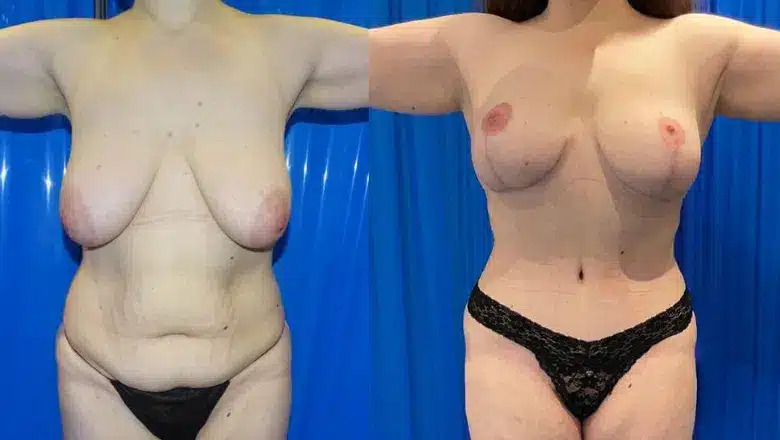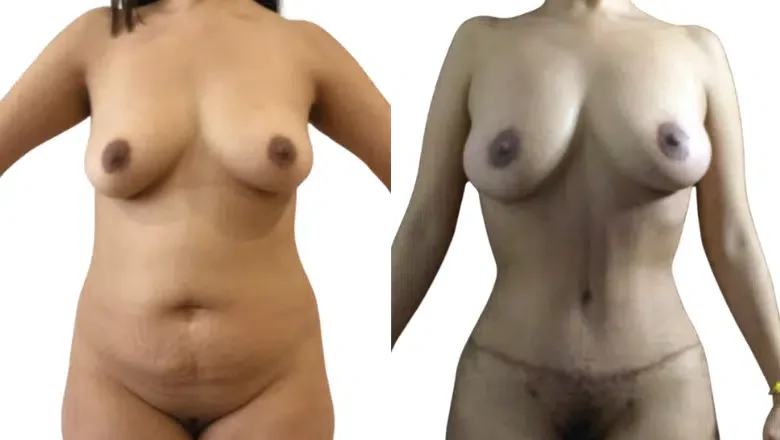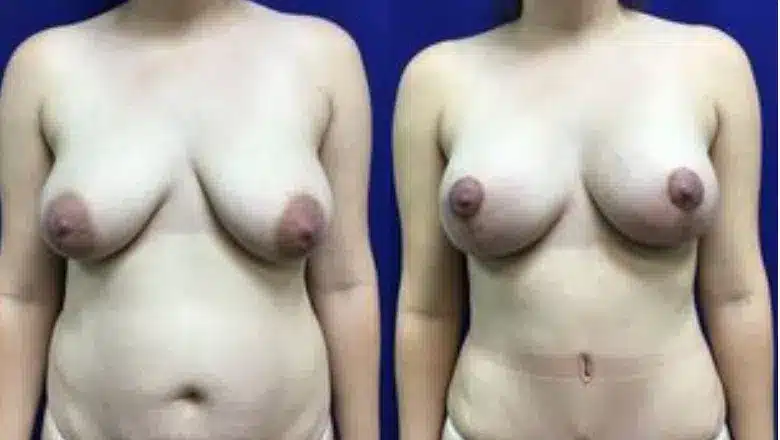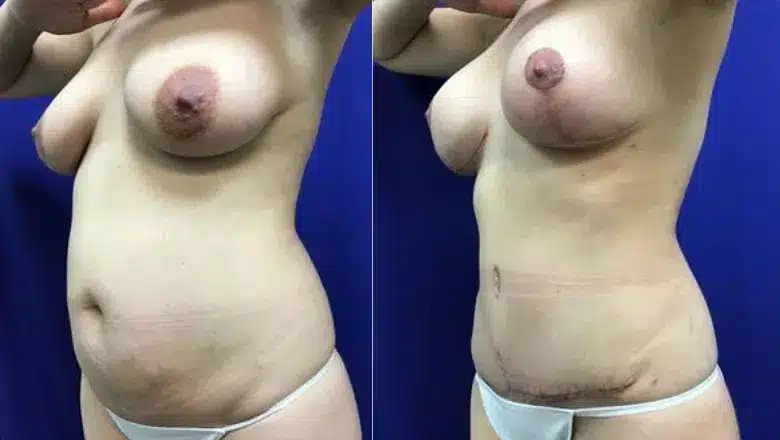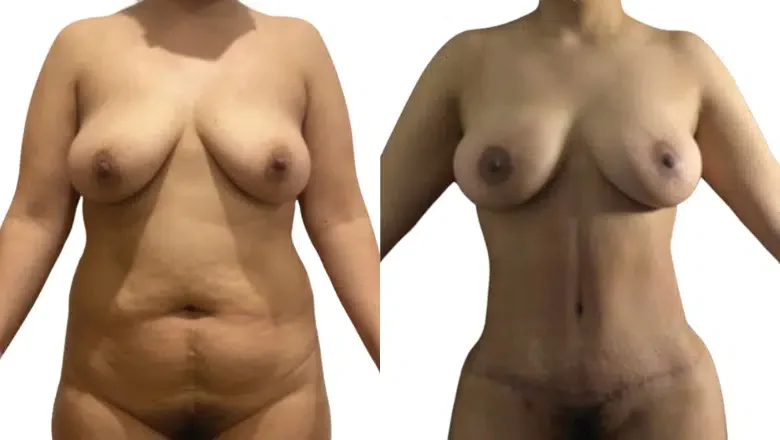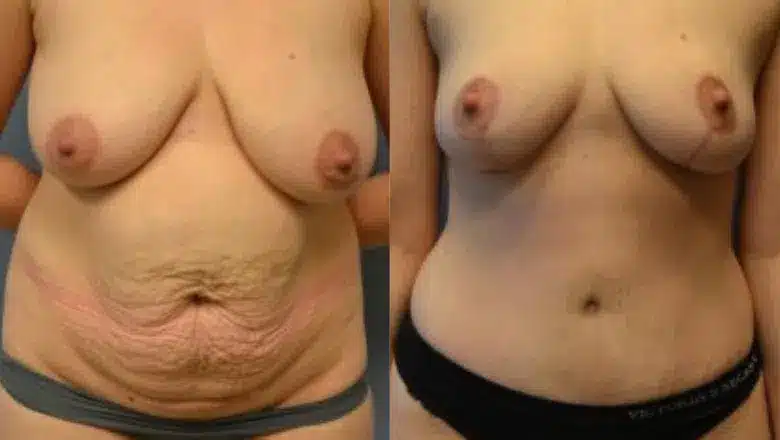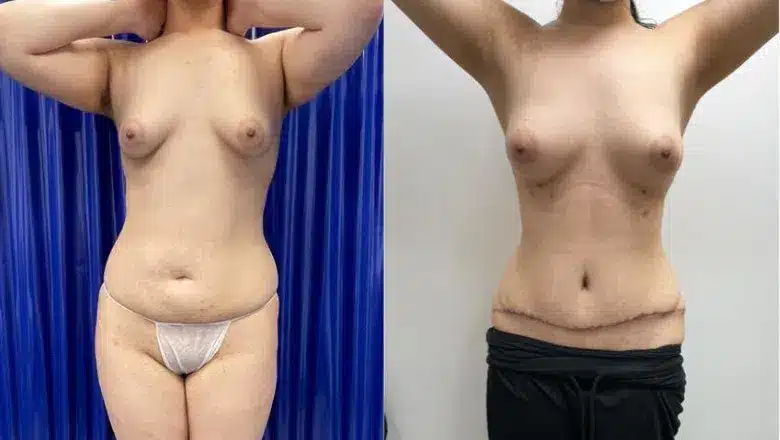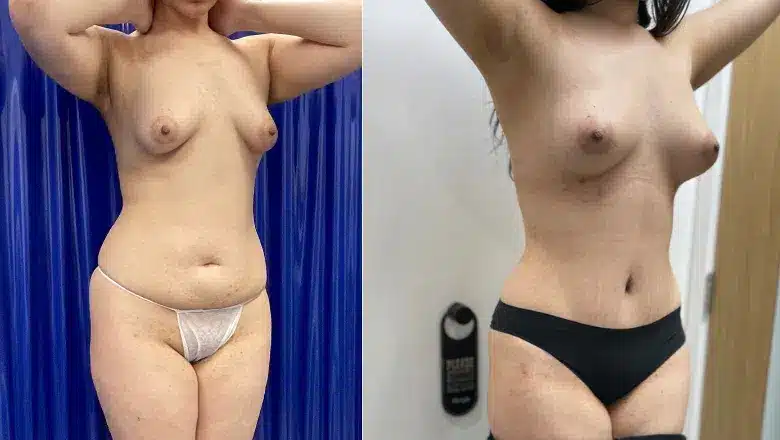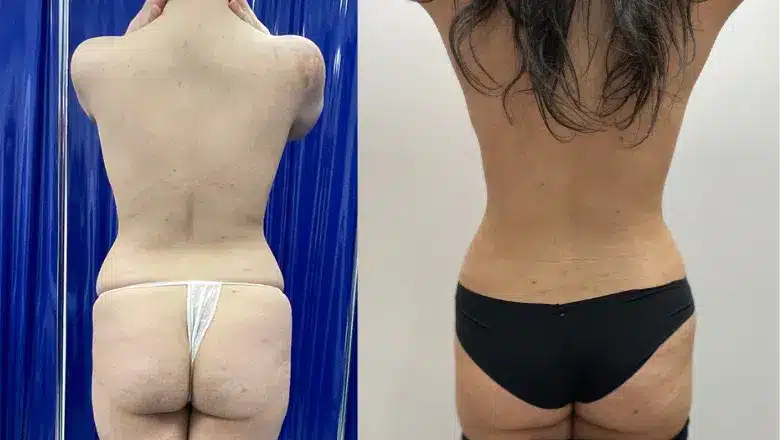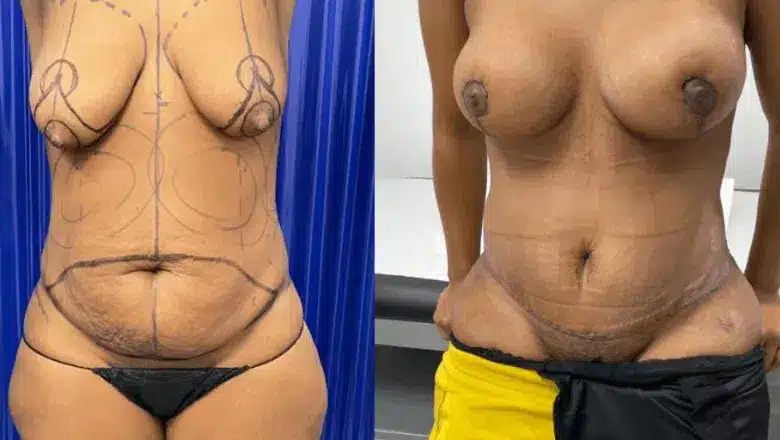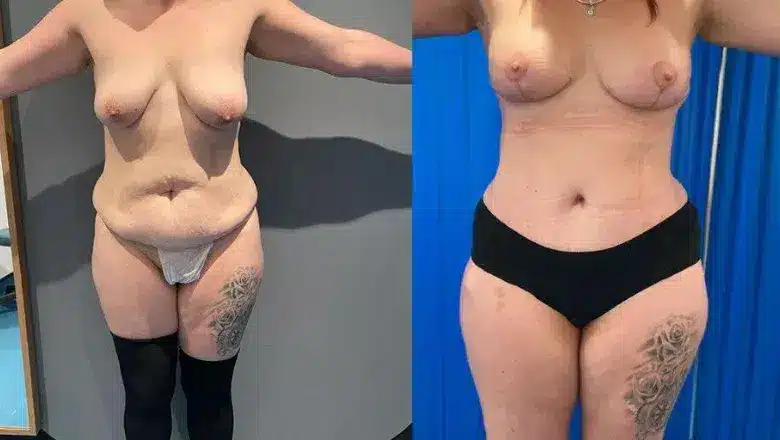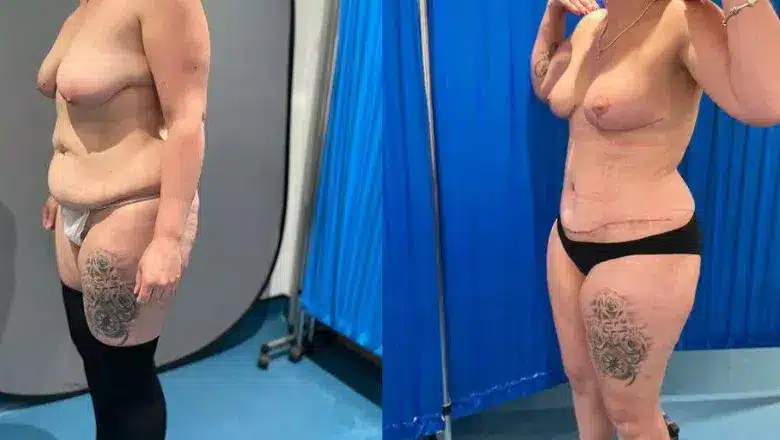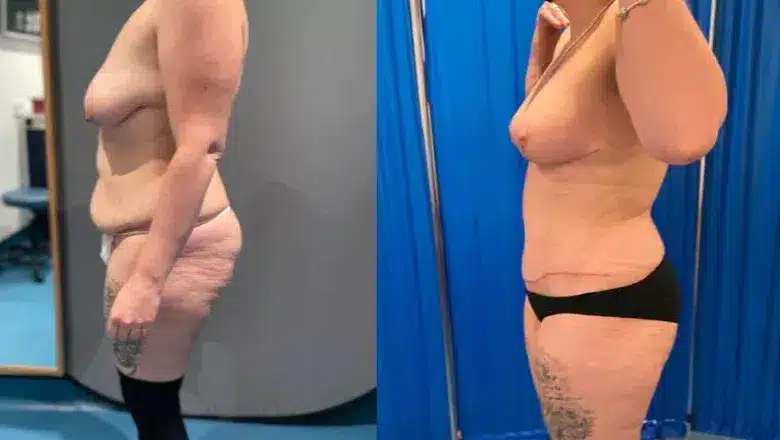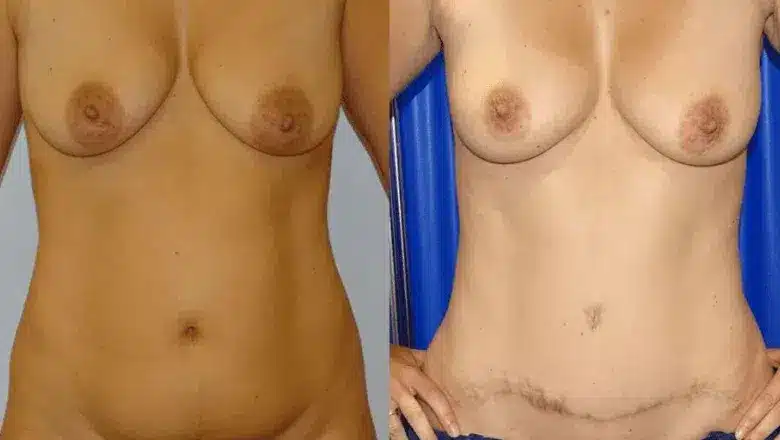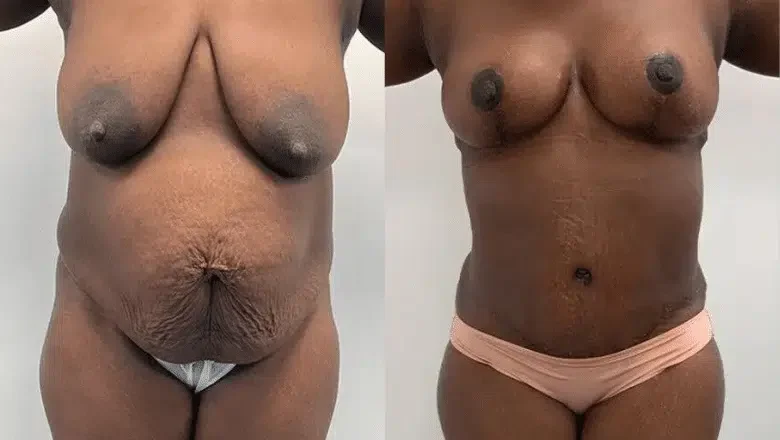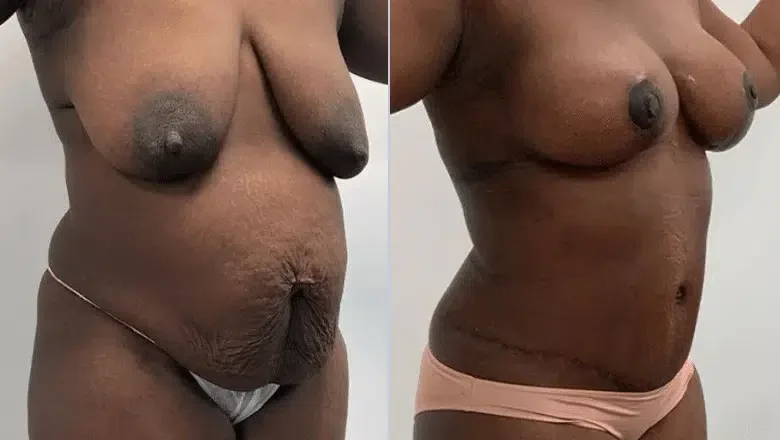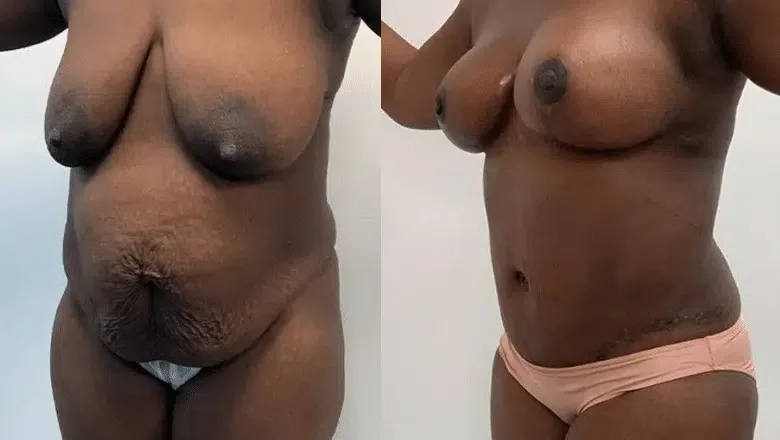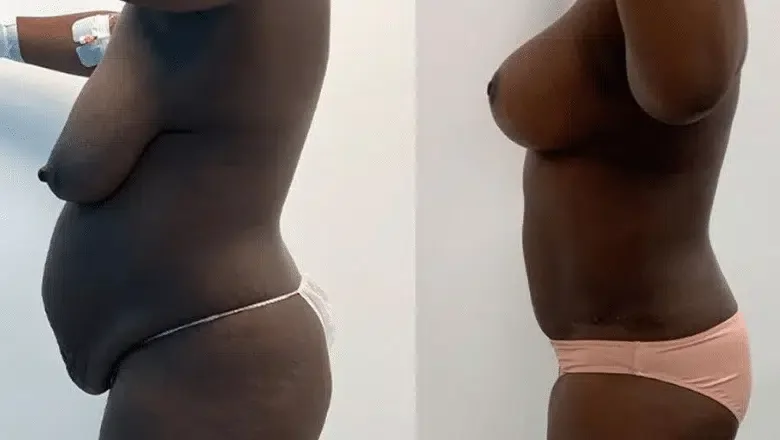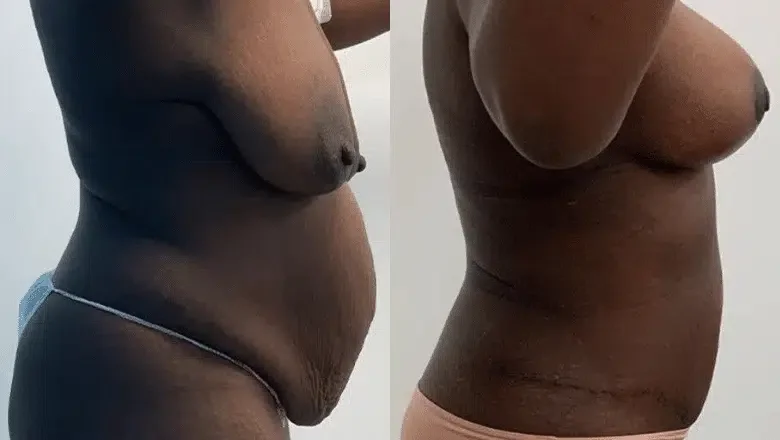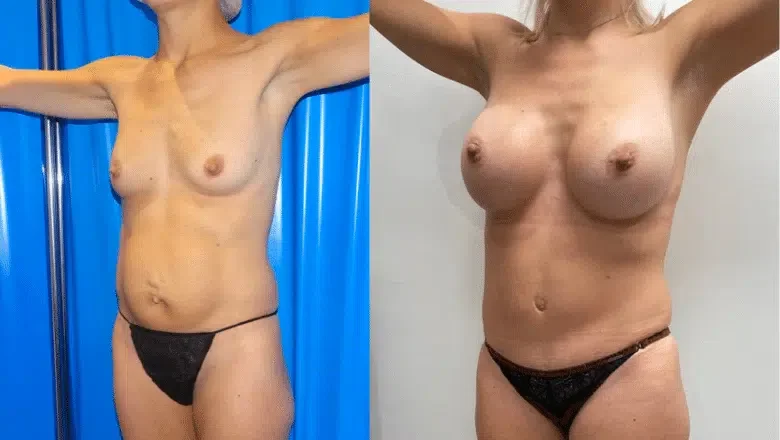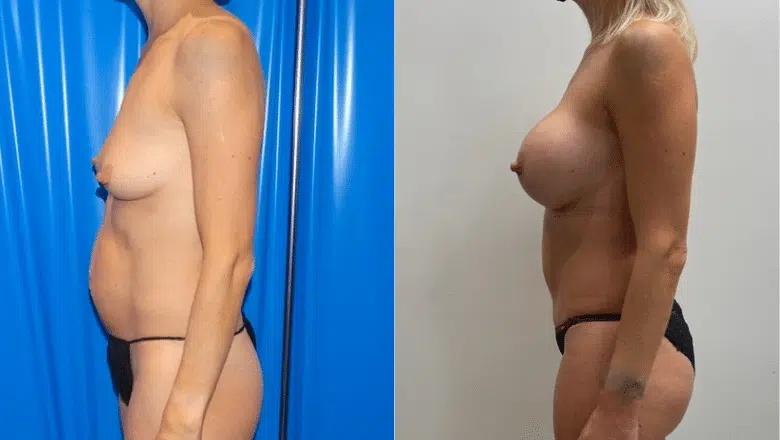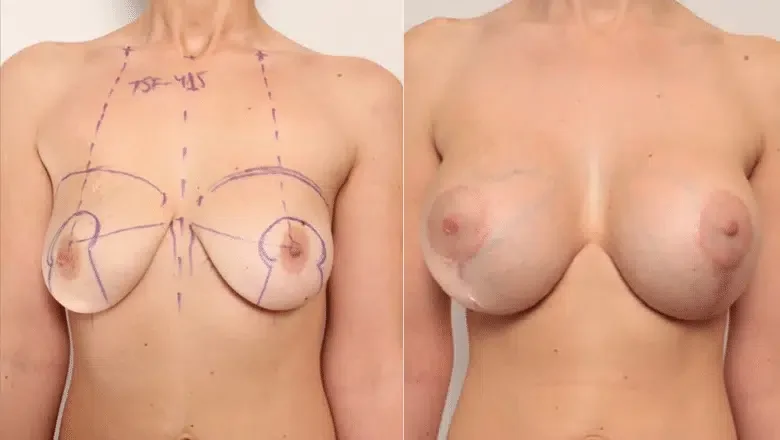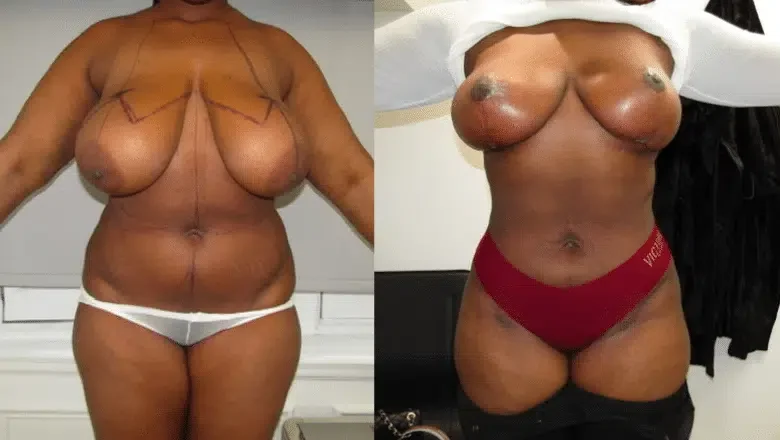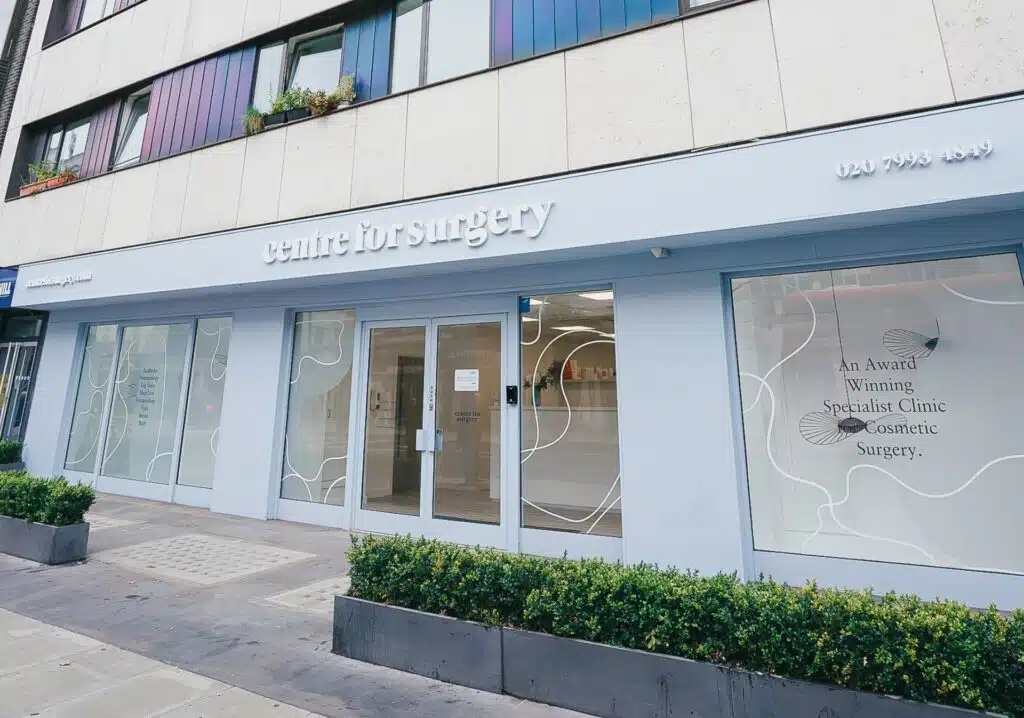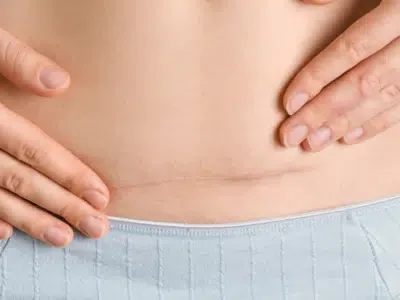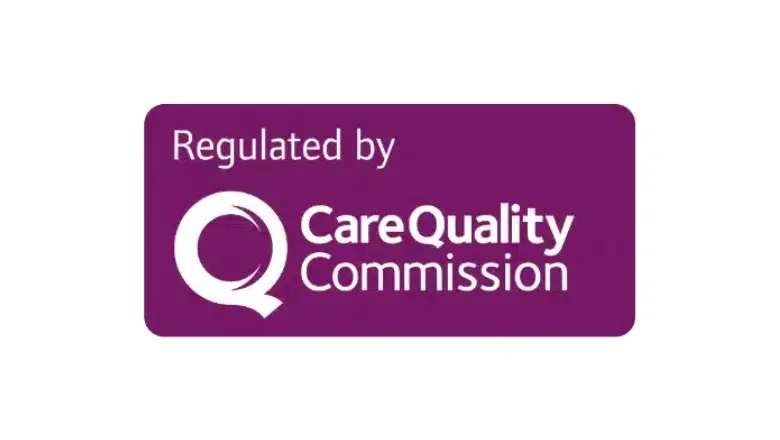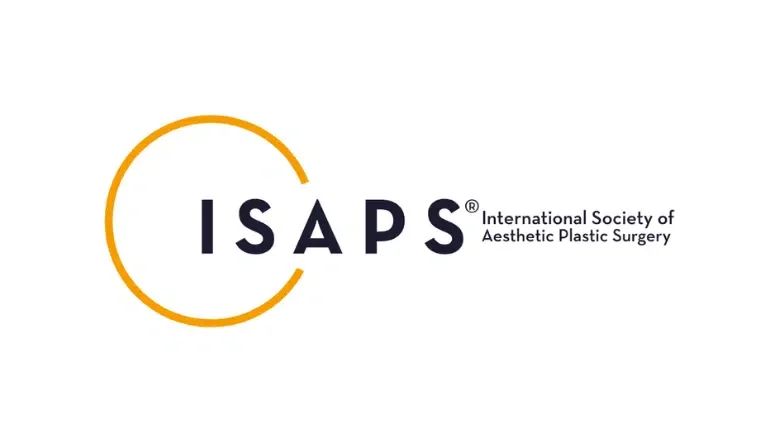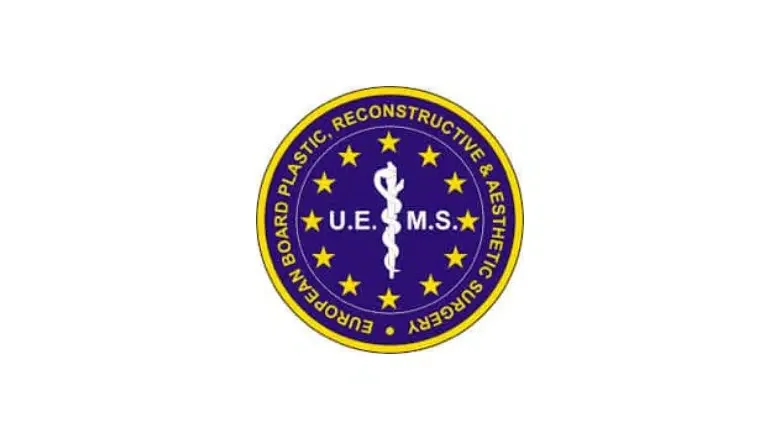Will I Have Mummy Makeover Scars?
When considering a mummy makeover, many patients express worries about the potential scars that might result from the procedure. It’s a frequent topic during consultations, where the understandable desire to avoid scarring is often voiced. Indeed, scars are an inevitable part of the surgical process.
However, the encouraging aspect is that there are effective methods to lessen the visibility of these scars. In this discussion, we will explore important insights about scarring following a mummy makeover and the strategies available to minimise their appearance. This knowledge aims to provide a clearer understanding and reassurance for those contemplating this transformative surgery.
RELATED: Mummy Makeover Before & After Photos
Breast Lift Scars
When it comes to breast lift surgery, plastic surgeons typically use one of three main incision patterns, each varying in complexity and size based on the patient’s needs and desired outcomes. These are:
Doughnut Incision
This is the least invasive option, involving an incision around the outer edge of each areola. It is suitable for patients with minimal sagging, as it allows for a modest lift and minimal scarring.
Lollipop Incision
This pattern includes the doughnut incision around the areola and adds a vertical incision running down from the bottom of the areola to the under-breast fold. It is used for a moderate lift and can address more sagging than the doughnut incision alone.
Anchor Incision
The most extensive of the three, this method involves the lollipop incision with an additional incision along each breast crease (inframammary fold). It’s suitable for patients requiring a significant lift and repositioning of the breast tissue and nipple.
RELATED: Breast Lift Scars – what you need to know
Breast Augmentation Scars
In breast augmentation surgery, where the objective is to insert breast implants, the plastic surgeon needs to make an incision to facilitate the placement of each implant. The choice of incision location is influenced by various factors, including the type and size of the implant, patient anatomy, and personal preferences. Common incision types for breast augmentation include:
Inframammary Incision
This is made along the breast crease, where the bottom of the breast meets the chest wall. It’s a popular choice because it provides direct access for implant placement and is well-concealed under the natural breast fold.
Periareolar Incision
This incision is made around the outer edge of the areola. It’s often chosen for its discreet placement, as the scar can blend with the natural transition in skin color around the areola.
Transaxillary Incision
Made in the armpit, this approach leaves no scar on the breast itself. It’s a less common option but can be preferred by those who want to avoid any scars on their breasts.
RELATED: What Breast Augmentation Scars Can I Expect?
Tummy Tuck Scars
Tummy tuck surgery, known for its effectiveness in removing excess skin and tightening the abdominal area, often results in more noticeable scarring compared to some other cosmetic procedures. The extent and location of the scars depend on the specific type of tummy tuck performed and the amount of correction required. Here are the common scar types associated with different tummy tuck procedures:
Standard Tummy Tuck
The primary incision in a standard tummy tuck is made low on the abdomen, typically extending from hip to hip, just above the pubic area. This placement is strategic, allowing the scar to be concealed under underwear, bikini bottoms, or shorts.
Extended Tummy Tuck
For patients requiring more extensive skin removal, the incision of an extended tummy tuck may extend beyond the hip bones, towards the lower back. This is necessary to address excess skin and fat around the sides and lower back area.
Tummy Tuck with Vertical Scar
In some cases, particularly where there is significant excess skin both above and below the navel, an additional vertical incision may be required. This runs from the lower horizontal incision up to the navel, providing more comprehensive skin removal and tightening.
RELATED: What Scars can I expect from Abdominoplasty Surgery?
Liposuction Scars
Liposuction and fat transfer are two common procedures in plastic surgery that involve different scarring patterns due to their unique surgical approaches.
Liposuction Scars
The scars from liposuction are generally small, often only a few centimetres in length. These incisions are made to insert the cannula, a thin tube used to break up and suction out fat. These small incisions are strategically placed and are designed to be as inconspicuous as possible. Over time, they usually heal well and become almost invisible, blending into the natural folds and contours of the body.
Fat Transfer Scars
In procedures involving fat transfer, such as Brazilian Butt Lift (BBL) or fat transfer breast augmentation, the initial liposuction phase will result in the same type of small scars described above. However, the process of reinjecting the harvested fat into the target area (such as the buttocks or breasts) typically does not result in noticeable scarring. The injections are done using small needles or cannulas, and while there may be tiny entry points, these are often barely visible once healed and do not leave significant scars.

